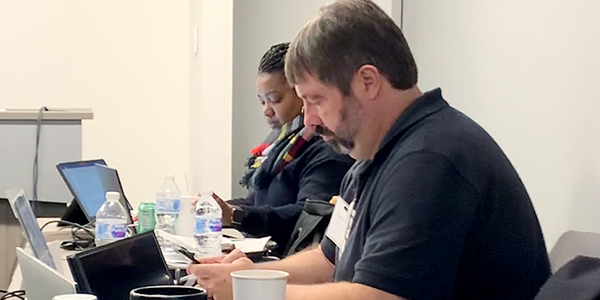By Holden Mann
ATLANTA — The standards drafting team revising the requirements for determining and communicating system operating limits (SOLs) is making steady progress toward posting the standard for industry comment by March (Project 2015-09: FAC-010, FAC-011, FAC-014).
At the SDT’s meeting Tuesday, team members focused on the proposed logging and communication requirements that form the primary unresolved topic for developing the rule. Former SDT Chair Vic Howell told NERC’s Standards Committee in November that the team had “come up with something” that would balance the desire of NERC Standards Committee Briefs: Nov. 20, 2019.)
Still at issue are questions about how often utilities should be required to check for SOL exceedances. Several industry representatives at the meeting pointed out that utilities may see small exceedances during regular operations that pose no concern for safety as they can be easily absorbed by expected demand increases. Nevertheless, an overly aggressive monitoring requirement could force providers to devote resources to logging and reporting that could be better spent elsewhere.
Another topic of disagreement is the “connection between determination of SOL exceedances and communication that exists in the standards today.” Chair Dean LaForest, of ISO-NE, who was appointed to replace Howell in December, said the current wording had led to comments from “both within the group and from [industry] participants” that defining the reporting and determination process in the same section could cause unnecessary confusion.
The inclusion of reporting requirements in the SOL determination methodology was part of the proposed compromise in November, but in light of these objections, the team is now considering whether to separate the description of the reporting process into a separate section.
Despite these areas of continued debate, LaForest told ERO Insider he is confident that the momentum of the development process has picked up and the standard will be ready for comment by March, with a final ballot expected by May.




